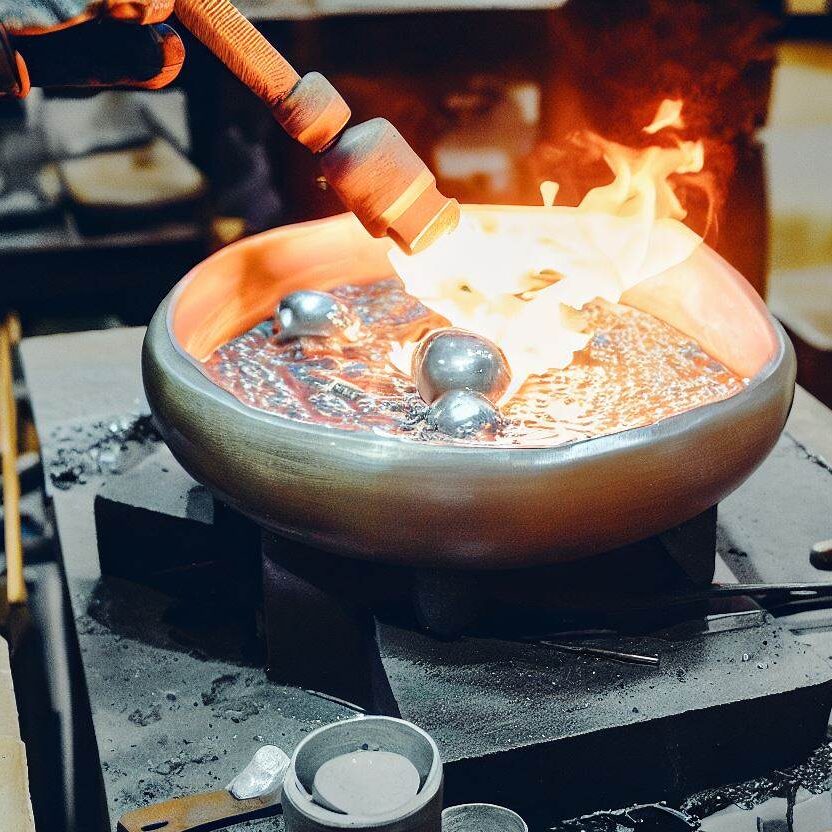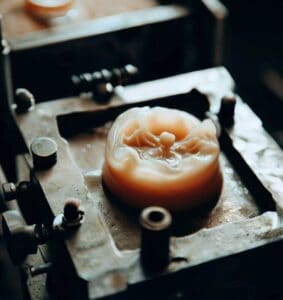Casting
Casting is a versatile and economical technique that allows the production of jewelry pieces with fine and intricate details. It is a technique in which metal is melted and poured into a mold to create a specific shape. This technique is very common in the creation of gold and silver jewelry.
Casting in jewelry-making is a manufacturing process that involves the melting of precious metals such as gold, silver, or platinum to create jewelry pieces. In this process, a specialized furnace is used to heat the metal until it melts and becomes a liquid state. Once the metal is in a liquid state, it is poured into a mold or matrix that has the desired shape of the jewel.
The mold can be made of different materials, such as plaster, silicone, or special metals capable of withstanding high temperatures. After the metal cools and solidifies in the mold, it is removed from the mold, and the final finishes are performed, such as polishing and setting of gemstones if necessary.
Jewelry casting allows the production of complex and detailed pieces, as the casting process enables the capture of all the details of the original design in the mold. It is also possible to combine different metals into a single piece using the casting technique, providing a higher level of versatility in jewelry design.
It is important to highlight that jewelry casting requires skills and technical knowledge, as temperature control and handling of the molten metal are critical aspects to achieve accurate and high-quality results.
Types of jewelry casting
- Lost-wax casting
- Sand casting
- Clay casting
- Pressure casting
Basic tools used in casting
- Casting furnace
- Molds
- Crucibles
- Crucible tongs
- Metal ingots or grains
- Casting molds
- Rollers and rolling mills
- Spatulas and chisels
- Drills and milling machines
- Graphite ingots and bars
- Safety equipment
Materials used in jewelry casting
History of casting
Casting is a form of extractive metallurgy that involves heating and reducing mineral ore to obtain pure metal and separate it from the gangue and other possible elements.
Metal casting is a prehistoric technology, but it only appears recently in archaeological records. It originated when ancient people used fire technologies, called pyrotechnologies, which provided the basis for the development of casting.
The first metals used were gold, silver, and copper, as they were found in their natural or metallic state. Gold could be formed into larger pieces through cold hammering, but copper could not. Therefore, around 7000 BCE, people from the Neolithic period began hammering copper into crude sheets and knives. The earliest known copper artifacts were found in Iraq and date back to 8700 BCE.
The next step was to discover that metals like copper could be extracted from their ore by heating the metal beyond its melting point and that such metals could be molded by melting and pouring them into molds. The first metal to be cast was copper in the ancient Middle East. The earliest known artifacts formed through casting and molding are copper axes from the Balkans dating back to the 4th millennium BCE. Forced-air furnaces were invented to achieve the high temperatures required for casting.
The next critical discovery was that the combination of copper and tin produced a superior metal: bronze. Serbia used copper and tin to make bronze objects, marking the beginning of the Bronze Age. Different types of bronze were made for different purposes, and casting technology spread, probably through trade and migration, from the Middle East to Egypt, Europe, and China.
Other metals that were cast included lead, silver, iron, and zinc. Each had its own challenges and applications. Iron, for example, required higher temperatures and more sophisticated furnaces than bronze. Zinc was difficult to cast due to its low boiling point. Silver was initially obtained as a byproduct of lead casting.
Casting has been a very important human activity throughout history, as it has allowed the extraction of metals to manufacture tools, weapons, coins, jewelry, artworks, and more. Casting has driven the economic, social, cultural, and technological development of civilizations.


Sandra Sanchez
Sandra is passionate about jewelry and interior design. She graduated in interior design from Universidad Taller 5 in Colombia and has completed several courses and postgraduate studies in Jewelry in Barcelona and Madrid, Spain. She combines her work as a jeweler and interior designer with teaching.
